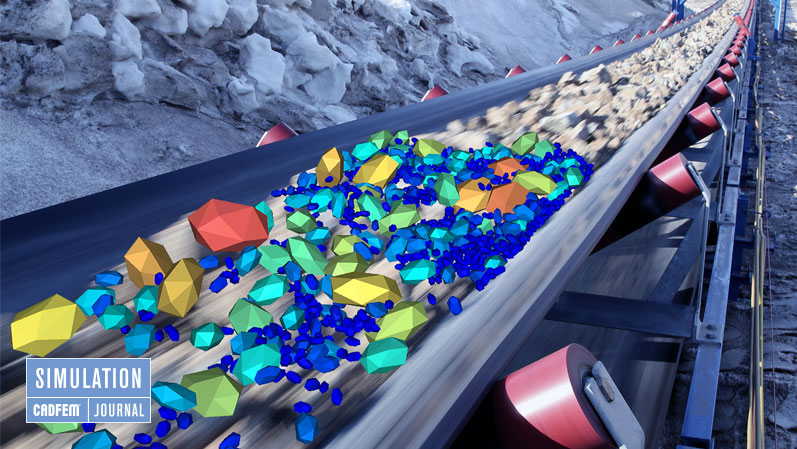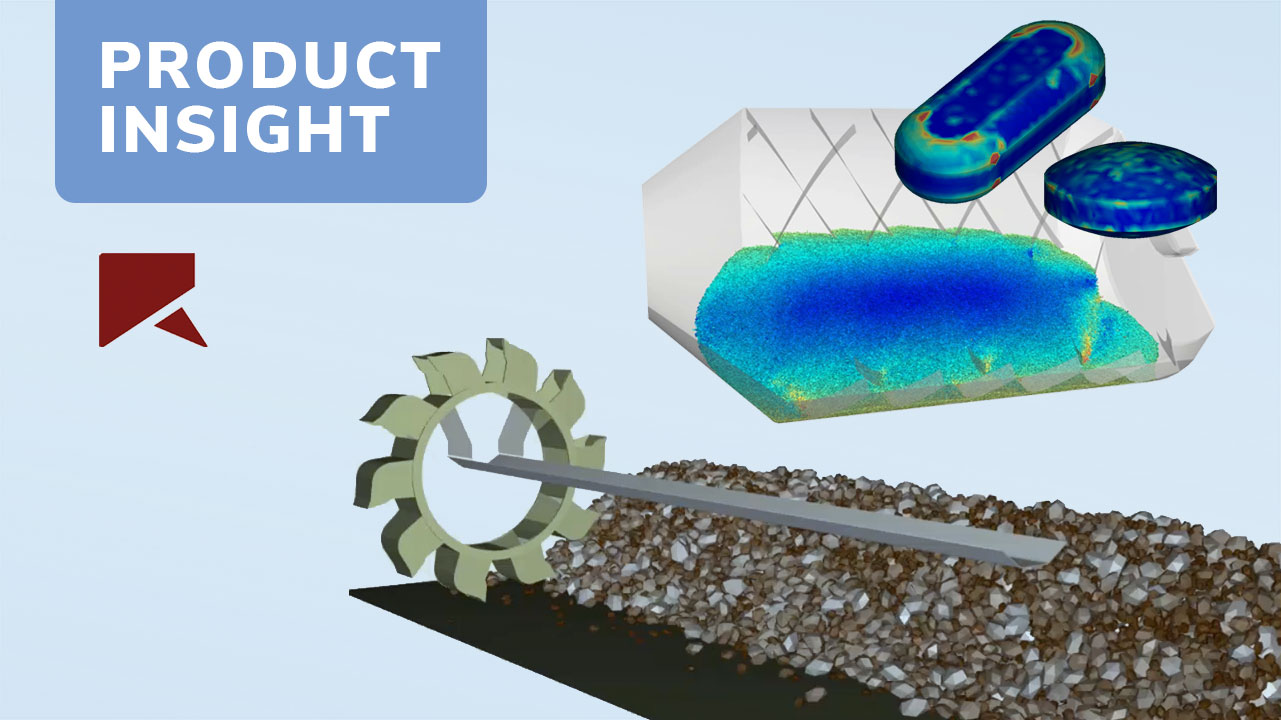Product development
Live simulation and automation get to your goal faster
Many companies are currently accelerating the pace of their product development in order to bring new models to market sooner. Until now, development engineers have been slowed down by the computing speed of simulation applications. But new technologies are shortening the path to the optimal product from days to hours.
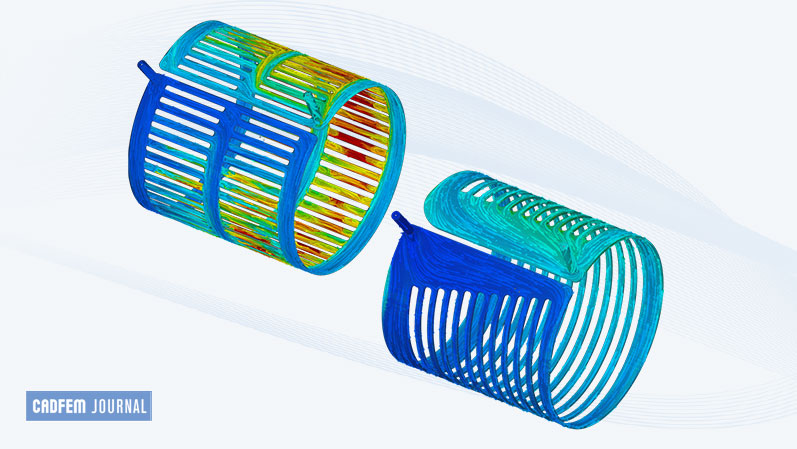

“Our customer had a very strict timeline and high demands on the product,” reports Kai Schneider, who works as a development engineer at drive specialist Wittenstein Cyber Motor GmbH. Together with his colleagues, he had to implement the required cooling capacity for an electric motor. Even without time pressure, this was a challenging task, because the cooling design must take up only a small amount of space, handle a high power density and keep temperatures within narrow limits. “We couldn’t draw on empirical values, but rather had to develop a completely new cooling design,” says Schneider.
The team knew it would come down to the right simulation strategy. What they didn't know was if their previous approach would be up to the challenge. “We were skeptical about whether we would be able to make it in time using our previous simulation setup.” The team could have handled 14 variables to configure an optimal design. But using standard CFD simulation tools, one simulation per variable would have taken several hours – time Schneider’s team didn’t have.
Rethinking standard simulation processes
Wittenstein turned to CADFEM. The simulation specialist not only distributes highly specialized software through its nine locations in Germany, Austria and Switzerland, it also advises companies throughout the DACH region and empowers engineering teams to optimize sophisticated product developments using the latest simulation technology.
After familiarizing themselves with the case, a team of simulation experts from CADFEM proposed a three-pronged approach with enormous potential to save time:
- Live simulation should reduce the individual simulation time by several orders of magnitude.
- Combined with parameter optimization, a large number of possible variable combinations could be broadly tested in an automated manner, without manual control, to identify the largest control levers.
- The most promising option would then be validated with a detailed analysis, which is now only required once, using the high-end CFD solvers from the Ansys CFD portfolio.
Customers like Wittenstein, who have previously carried out their simulations internally and are looking for more efficient solutions, are increasingly turning to CADFEM. “In many cases, classic simulation practices can no longer keep up with the fast pace of the market. We have therefore developed a new standard process in simulation that takes this situation into account,” reports Daniel Soukup, Engineering Consultant at CADFEM.
Technology has made enormous leaps in the past five years, and there are many providers (not only one unique setup) that can quickly produce the optimal result for each use case. This makes it difficult for companies to navigate the market. Those who realize early enough that their existing resources are not sufficient to achieve a satisfactory result in time will seek external support.
Costly delays or suboptimal products
The specified or accepted development times are dramatically reduced. For this reason, traditional approaches using familiar CAE simulation methods can often lead to bottlenecks in terms of time. Until now, companies had to make a choice. If they accept longer development times in order to create a truly optimal product, sales decrease due to delayed market entry. For example, if market entry is delayed by six months with a product life cycle of three years, a 60 percent drop in sales can be expected on average. A short time to market is therefore essential. To achieve this without compromising quality, companies must increase their capacities and run several simulations in parallel according to the classic approach, which is a costly approach.
For economic reasons, testing of all configurations has rarely been fully feasible, despite existing CAE simulation capabilities. As a result, the efficiency of components has remained below the optimum, production speeds have been slower, and resource consumption has been higher than physically possible. Often, deficiencies only became apparent late, after a prototype had already been manufactured or the product had been installed.
Evaluate hundreds of products in just a few minutes
Live simulation is a central building block for not only speeding up development processes a little, but achieving a quantum leap. The applications use faster solvers that, unlike conventional simulation solvers, exploit the specific capabilities of graphics processors (GPU technologies) in model building and solving in a targeted manner. Hundreds of variants are thus calculated by the software within seconds and minutes, while conventional solutions require hours and days. 3D visualizations enable development engineers to quickly compare initial ideas and experiment with variants.
Although live simulations have been on the market for several years, one shortcoming has been the lack of embedding them in an integral simulation methodology for modeling, design discovery, analysis and workflow automation. In the meantime, solutions such as Ansys Discovery offer these exact necessary frameworks, which can be quickly identified using optimal designs and validated with high precision.
Live simulation brings speed to the process. The connection to parameter optimizers, such as Ansys Optislang, helps to make valid decisions between many different variants. In this way, automated simulation workflows are created via simple Python interfaces. How do different design variants change the product properties? Instead of manually comparing the results of individual simulations, engineers could systematically compare the answers in a central application - quickly and cost-effectively. In addition, sensitivity analyses help to identify key parameters and focus optimization on them.
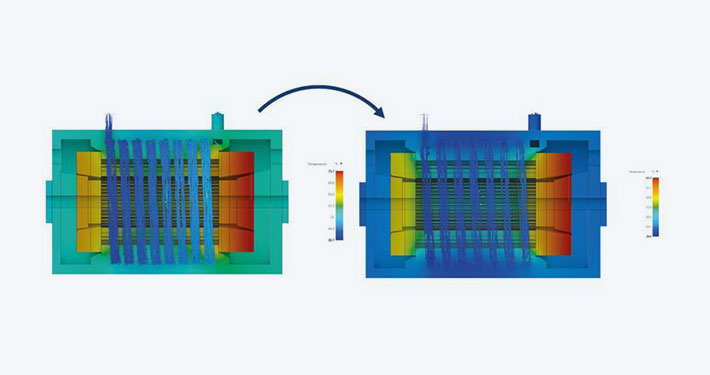
Live simulation, also called design-accompanying simulation, allows the designer to simulate at an early stage of product development. Due to the high calculation speed, design variants can be evaluated live during design or even during a meeting. It is no longer just specialized simulation experts with access to the appropriate computing power that have access to simulation software, but to a wider range of users.
With live simulation, rapid feedback on the model is possible. Whether mechanics, flow or temperature, the physical effects on the product are directly visible. This allows design changes to be quickly evaluated and analyzed, which significantly accelerates the product development process.
Kai Schneider, development engineer at Wittenstein cyber motor GmbHVisualization now makes it much easier for us to justify our configuration to the customer.
Sound decisions, higher customer satisfaction
“We have a sound basis for making decisions about our design thanks to the new procedure,” says Kai Schneider. “Visualization now makes it much easier for us to justify our configuration to the customer.”
For Schneider and his team, the investment in the new setup has paid off. The first simulation already showed that the team’s original design approach would not work; the maximum temperature of the fluid was too high, the flow in some channels was poor, and hotspots were forming. Should the struts be repositioned? Individual walkways widened? Instead of following subjective assessments, the team was able to take a data-based approach using the workflow developed by CADFEM. A few days later, Schneider presented its customer with a significantly different geometry for the cooling system. “Not only did we meet all the requirements, we were also able to reduce the pressure loss by 50 percent, completely avoid hotspots, and reduce the maximum temperature of the fluid by 10 percent.”
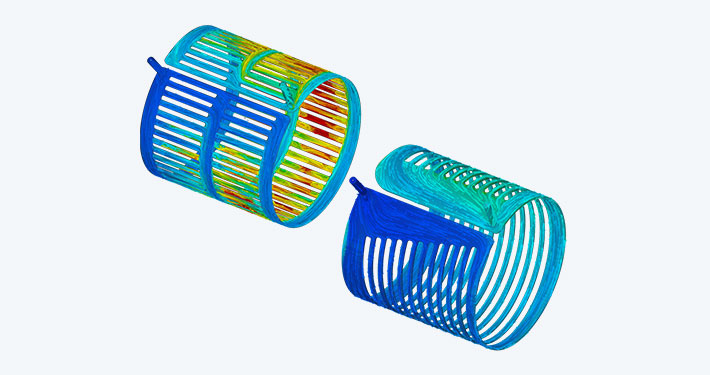
New standard in simulation affects all industries
Automation and a clever combination of simulation software are gamechangers in mechanical product development – and not just in electromobility. “Being able to track changes to models live and control optimization benefits all industries,” says Daniel Soukup. Whether snowboards, dental implants or chocolate production plants, the principles of the simulation workflow can be applied regardless of the specific task.
Even for companies with existing calculation departments, it can be worthwhile to put their current simulation methodologies to the test with external support. “Our goal is not to create dependencies, but rather to make our customers self-sufficient,” emphasizes Daniel Soukup. For many other companies, outsourcing will remain the first choice because orders are too diverse, and they consider the economic risk to be too high. If they want to remain competitive, however, they should pay attention to how their service providers work. For Wittenstein, working with CADFEM was the deciding factor in completing its contract on time and fully meeting its customer's requirements. Companies that do not use live simulation with automation in parameterization miss out on up to a tenfold reduction in time to market. Only very few will be able to afford this in the future.
Daniel Soukup, computational engineer at CADFEMOur goal is not to create dependencies, but rather to make our customers self-sufficient

Author: Paul Henkel
(Freelance journalist and B2B copywriter)
Images: © CADFEM
Published: February, 2023
Initial release:
MM Maschinenmarkt (11/2022)
Contact CADFEM




